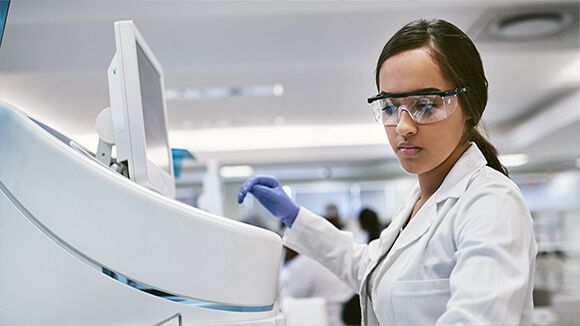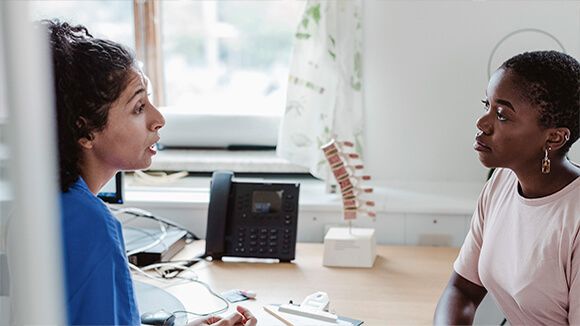Counterfeit Prescription Drugs: How Organizations are Combating the Sale of Fake Meds
If you get caught in a medical fraudster's trap, that cost may be steep. By taking counterfeit prescription drugs (which look real but aren't), you not only run the risk of not receiving the benefits of the intended medication, but fakes can also harm you. Unsuspecting buyers may experience allergic reactions, overdose, or other adverse effects caused by unapproved ingredients.1 Beyond the physical risks, they may also expose themselves to identity theft or financial fraud.
So how can you keep yourself and your family safe from fake meds? Start by learning as much as you can about counterfeit medicines: what they are, where they're found, and what's being done to stop them.
Organizations Tracking the Prevalence of Fake Meds
With counterfeit drugs, the packaging and design of the medicines may appear identical or nearly identical to a legitimate, approved drug that you were prescribed. However, the quality, storage, dosage, and/or ingredients may not be the same. Despite any claims you may see on the box, counterfeits are not approved by the U.S. Food and Drug Administration (FDA).1 This is why organizations are so eager to find them and root them out.
In the United States, the FDA works with other agencies as well as private companies to secure the supply chain of medical products. For example, one partnership between the FDA and the U.S. Customs and Border Protection helps to track and intercept counterfeit drugs coming from overseas. The FDA has also created industry standards as part of anti- counterfeiting initiatives, such as guidance about imprinting identifiers on pills, to help drug manufacturers differentiate the real stuff from the fakes.2
While the World Health Organization (WHO) has reported that it's difficult to determine exactly how many fake drugs exist, experts do know they're widespread: Counterfeits are found worldwide, from the Americas and Africa to Europe and Asia.3
Of all reported counterfeits worldwide, malaria and antibiotic medications are the most common at 19.6% and 16.9%, respectively.3 One public health expert experienced fake antimalarials firsthand when he developed a dangerous form of malaria after buying an illegitimate drug abroad that turned out to contain just the common fever reducer we all know as acetaminophen.4
Combating Counterfeits Through Technology and Partnerships
Pfizer is committed to protecting the integrity of medications and putting an end to counterfeits. As a participant in the nonprofit campaign Fight the Fakes, Pfizer aims to help raise awareness and share the experience of individuals and families affected by fake drugs. For people looking to help with on-the-ground change, Fight the Fakes has hosted an annual campaign.
Pfizer also combats the sale of counterfeit drugs by building anti-counterfeiting laboratories. In these labs, teams continually evaluate new technologies to analyze increasingly complex counterfeits of Pfizer-produced drugs. Additionally, Pfizer's Global Security team partners with the law enforcement community to identify counterfeit medications and respond to reports of counterfeits.
Pfizer's Global Security team partners with the law enforcement community to identify counterfeit medications and respond to reports of counterfeits.
Through these partnerships and using advanced lab equipment that helps determine drug authenticity, Pfizer has helped prevent over 302 million counterfeit doses from reaching patients since 2004.
What You Can Do to Stop Counterfeit Drugs
Very often, medical fraudsters take advantage of people looking for a good discount on their medications. But there are safer ways to receive medications more affordably, such as asking for a discount card, requesting generics, or using mail- order programs through your insurance.
When looking for lower-priced medicines, be wary of any online drugstores that feature prices that seem too good to be true or that don't make a licensed pharmacist available to answer questions.1 Additionally, if buying online, look for a National Association of Boards of Pharmacy (NABP) Verified Internet Pharmacy Practice Site (VIPPS) and always check the pharmacy's license through their state agency: The FDA provides links to each state's lookup tool.5
If you suspect you may have already taken a counterfeit medication, let your doctor know as soon as possible since counterfeits may lead to serious side effects, allergies, or other health problems. You can also report the suspected counterfeit operation directly to the FDA.6
Nobody should have to suffer just because they sought a good deal. Ask your doctor how to keep drugs more affordable without compromising your safety and help #FightTheFakes.
- How to buy medicines safely from an online pharmacy. U.S. Food and Drug Administration. https://www.fda.gov/consumers/consumer-updates/how-buy-medicines-safely-online-pharmacy. Last updated January 25, 2018. Accessed November 1, 2021.
- Counterfeit medicine. U.S. Food and Drug Administration. https://www.fda.gov/drugs/buying-using-medicine-safely/counterfeit-medicine. Last updated January 5, 2021. Accessed November 22, 2021.
- WHO global surveillance and monitoring system for substandard and falsified medical products. World Health Organization. https://www.who.int/medicines/regulation/ssffc/publications/GSMSreport_EN.pdf). Published 2017. Accessed November 1, 2021.
- Breman JG. It's time to stop murder by counterfeit medicine. STAT. https://www.statnews.com/2019/05/07/stopping-murder-counterfeit-medicine/. Published May 7, 2019. Accessed November 1, 2021.
- Know your online pharmacy. U.S. Food and Drug Administration. https://www.fda.gov/drugs/besaferx-your-source-online-pharmacy-information/know-your-online- pharmacy#Pacific. Published 2019. Accessed November 1, 2021.
- Reporting unlawful sales of medical products on the internet. U.S. Food and Drug Administration. https://www.accessdata.fda.gov/scripts/email/oc/buyonline/english.cfm. Last updated November 21, 2019. Accessed November 1, 2021.


